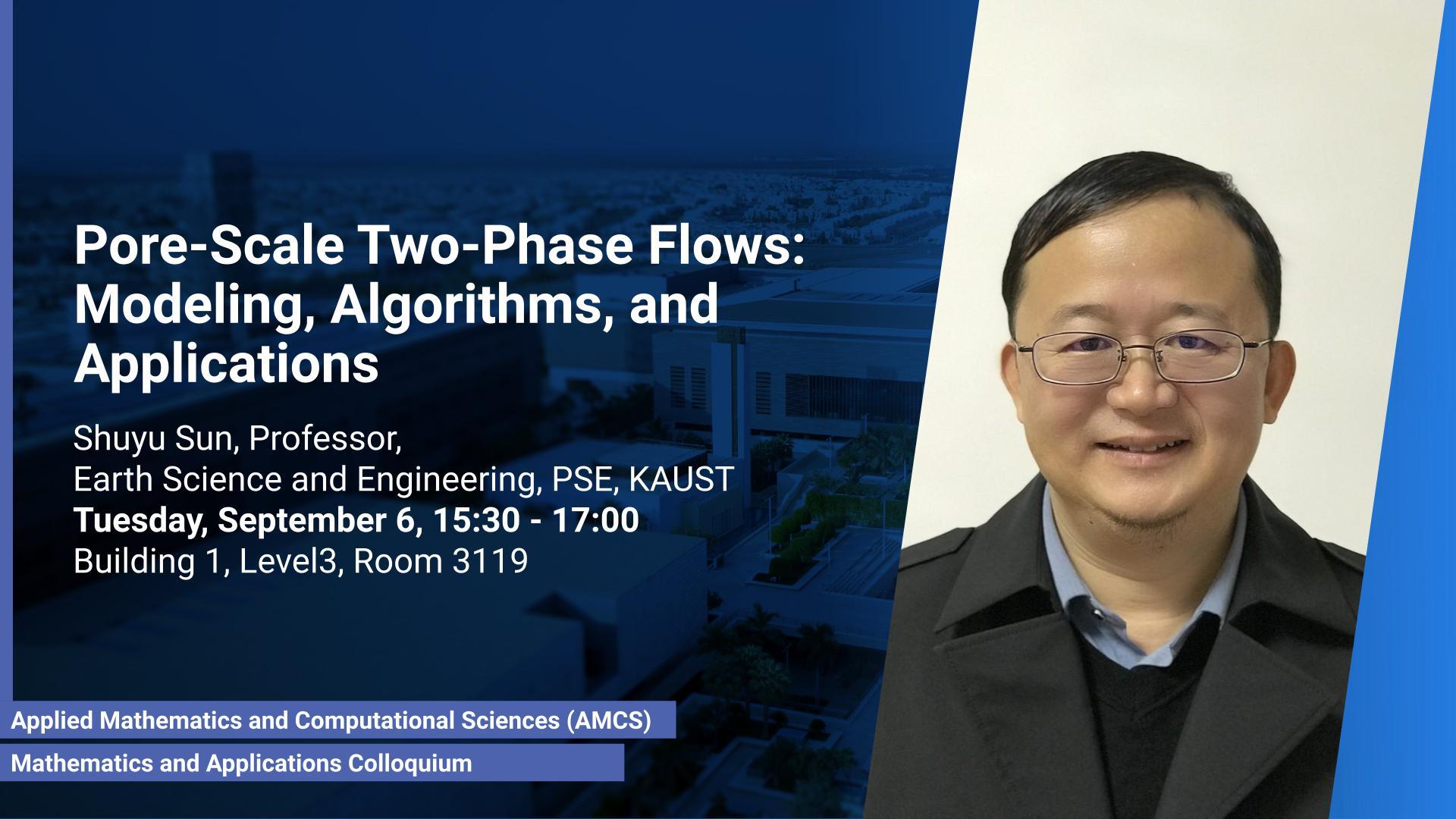Event Start
Event End
Location
Abstract
Two or multiple phases in fluid mixture commonly occur in petroleum industry, where oil, gas and water are often produced and transported together. Petroleum reservoir engineers spent great efforts in drainage problems arising from the development and production of oil and gas reservoirs so as to obtain a high economic recovery, by developing, conducting, and interpolating the simulation of subsurface flows of reservoir fluids, including water, hydrocarbon, CO2, H2S for example in porous geological formation. Field-scale or Darcy-scale simulation has conventionally and routinely used for this purpose, but this approach requires a number of poorly known parameters including relative permeability and capillary pressure. Pore-scale simulation of two-phase systems, however, can lead to information on these parameters as well as to provide deep understanding of porous media flow and transport phenomena.
In this work, we consider two-phase flow at the pore scale. For two-phase flow without partial miscibility, we first discuss the popular modeling method by the Navier-Stokes-Cahn-Hilliard equation, and we present our recent work on its efficient numerical algorithms, especially our recent work on the SPH method for two-phase flow. For two-phase flow with partial miscibility, we study the modeling and simulation of possibly compressible, partially miscible, fully compositional two-phase hydrocarbon systems using diffuse interface models together with the Peng-Robinson Equation of State (PR-EoS). Our modeling scheme utilizes molar densities as the order parameters, and the approach is based on the coupling of the Navier-Stokes equation for flow and a Cahn-Hilliard-like equation with Peng-Robinson chemical potentials for phase behaviors of hydrocarbon fluids. For spatial discretization, we apply a finite volume-based method to turn the partial differential equations (PDE) into an ordinary differential equation (ODE) system. For temporal discretization, the resultant ODE system is decoupled by using an asymmetric splitting scheme, and then integrated in time using a semi-implicit marching scheme. In addition, targeting the specific features of each of the three terms in Peng-Robinson chemical potentials, we propose a number of energy-stable semi-implicit time schemes. Some of our methods are based on convex-concave splitting of Peng-Robinson Equation of State (PR-EoS), and some other methods of ours were constructed based on the scalar auxiliary variable (SAV) approaches as well as the energy factorization (EF) methods. Numerical results are presented to demonstrate the stability and efficiency of the proposed scheme. We compare our computational results with laboratory experimental data reported in the literature, which have good agreement. This presentation is partially based on joint work with Xiaoyu Feng (KAUST), Jisheng Kou (Hubei Eng. U.), Yiteng Li (KAUST), Zhonghua Qiao (HK PolyU), Xiuping Wang (KAUST), and Tao Zhang (KAUST).
Brief Biography
Shuyu Sun is a full professor at King Abdullah University of Science and Technology (KAUST), and he leads the Computational Transport Phenomena Laboratory (CTPL) at KAUST. He has been a founding faculty member of KAUST since 2009. Before joining KAUST, he served as an (tenure-tracked) Assistant Professor of Mathematical Sciences at Clemson University in the United States. He obtained his Ph.D. degree in computational and applied mathematics from The University of Texas at Austin. His research includes the modeling and simulation of porous media flow at Darcy scales, pore scales and molecular scales. Dr. Sun has published about 500 articles or book chapters, including 310+ refereed journal articles. He has three papers recognized as “Highly Cited in Field in Web of Science”, and recently he published a book with Elsevier entitled “Reservoir Simulation: Machine Learning and Modeling”. Currently he is the founding president of InterPore (International Society for Porous Media) Saudi Chapter.
